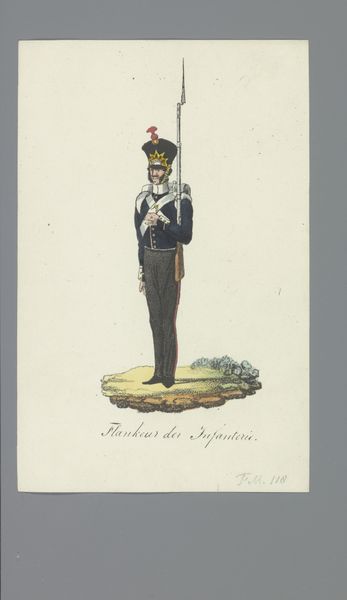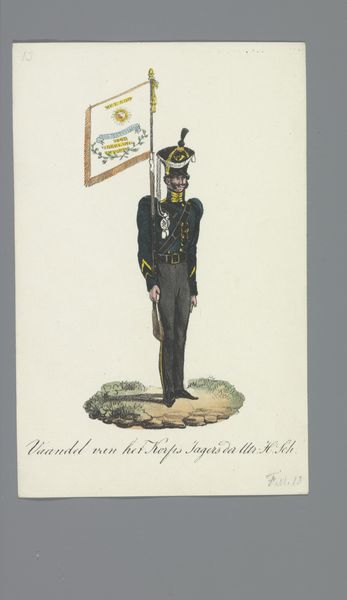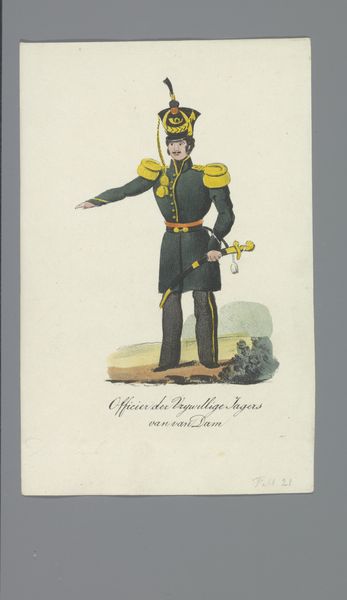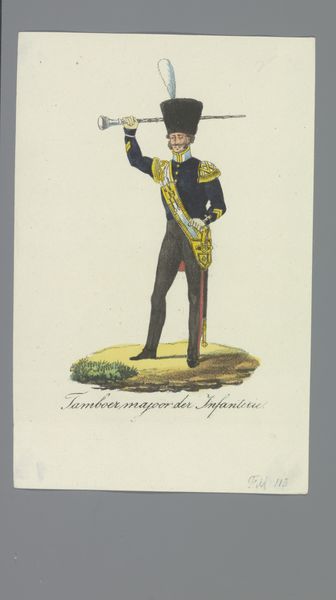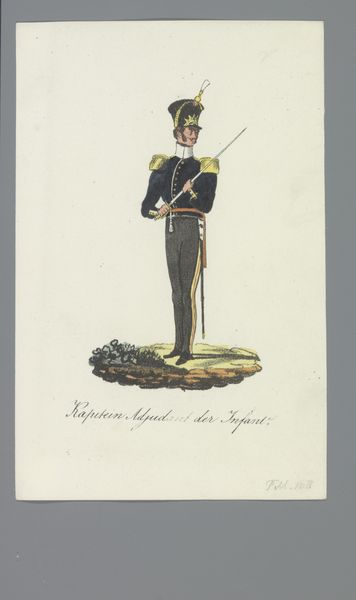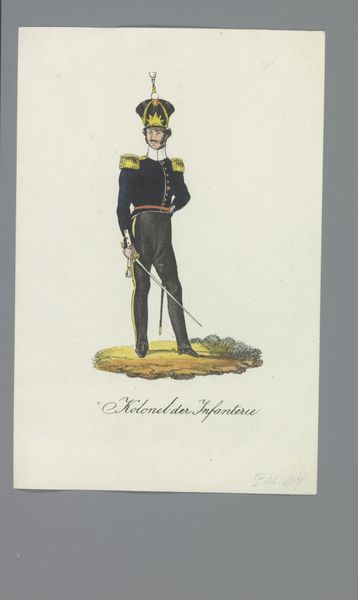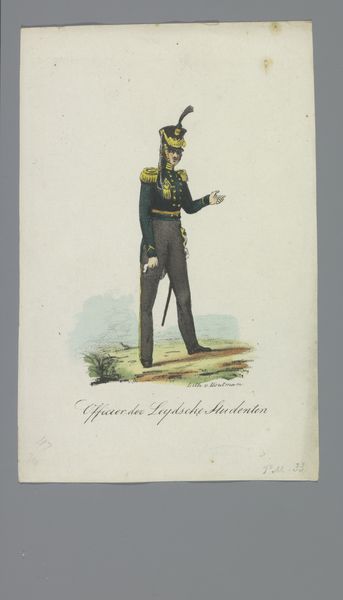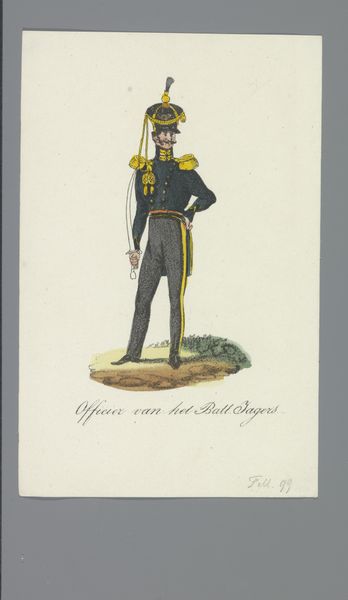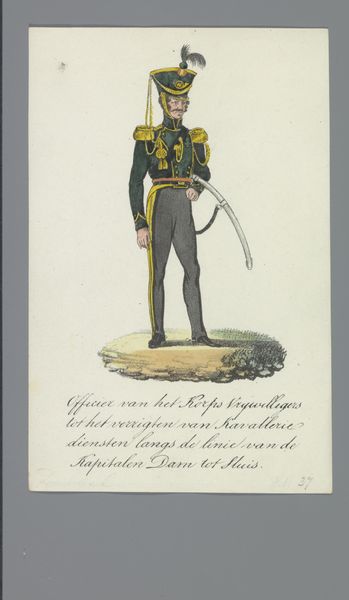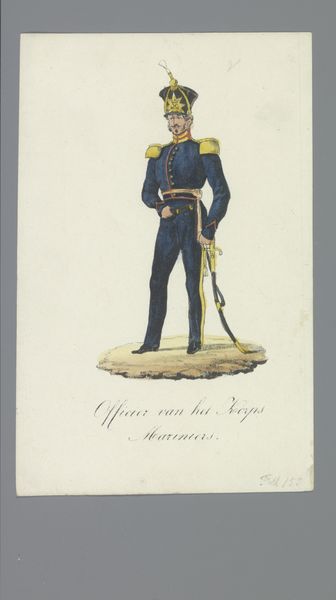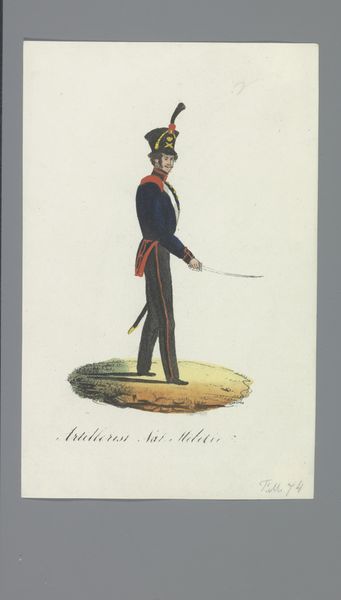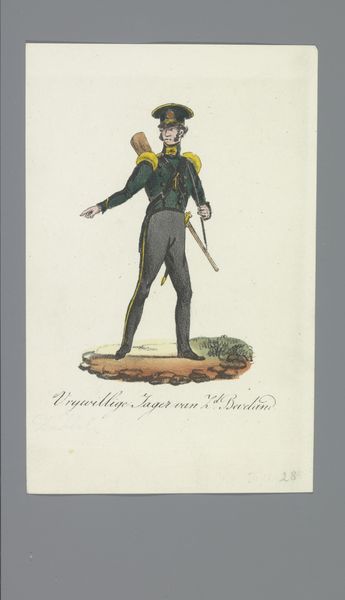
Officier der Vrijwillige Jagers van de Hooge school te Leyden 1835 - 1850
0:00
0:00
watercolor
#
portrait
#
watercolor
#
romanticism
#
costume
#
watercolour illustration
#
genre-painting
#
academic-art
Dimensions: height 170 mm, width 110 mm
Copyright: Rijks Museum: Open Domain
Curator: At first glance, I see a slightly absurdly elegant figure, almost doll-like in its meticulousness. It feels more like a costume sketch than a war-ready portrait. What do you think? Editor: Indeed. What you're observing is "Officier der Vrijwillige Jagers van de Hooge school te Leyden," dating from around 1835 to 1850. The artist, Albertus Verhoesen, captured the portrait in watercolor. Now housed here at the Rijksmuseum, it depicts an officer of the Volunteer Hunters from the University of Leiden. It's fascinating, isn’t it, how institutions used imagery to bolster their presence and purpose? Curator: The uniform practically shouts, “Look at me, I'm in charge… and dashing!”. The high collar, the frogging… it's visual theatre, isn't it? And watercolor? A rather delicate medium for such a...martial subject. Editor: It is, isn't it? It signals the embrace of Romanticism prevalent at the time while functioning within Academic art circles; consider how this aesthetic amplified individual heroes and their connection with an idealized vision of service and community—very much an aesthetic aligned with specific social values of the era. The art becomes intertwined with social positioning. Curator: I see a little bit of swagger with the pointed finger. It's the swagger of a well-fed scholar playing dress-up! The soft palette of watercolor softens that martial imagery that one expects from such a portrait—there is even something subversive in it; almost satirical. Editor: That softness probably made it much more palatable to public consumption during a period of nation-building; Verhoesen skillfully catered to this expectation, reinforcing civic duty without any hard edge! The politics of charm at play, I'd say. Curator: Perhaps more charming than disarming! Overall, it’s made me ponder the roles of universities—aren't they all inherently entangled with the prevailing social power dynamics of the time? Editor: Absolutely, a delightful observation. Thank you for pointing us there—indeed, it begs asking how visual art continuously serves, and subtly shifts our perspectives on historical narratives.
Comments
No comments
Be the first to comment and join the conversation on the ultimate creative platform.
